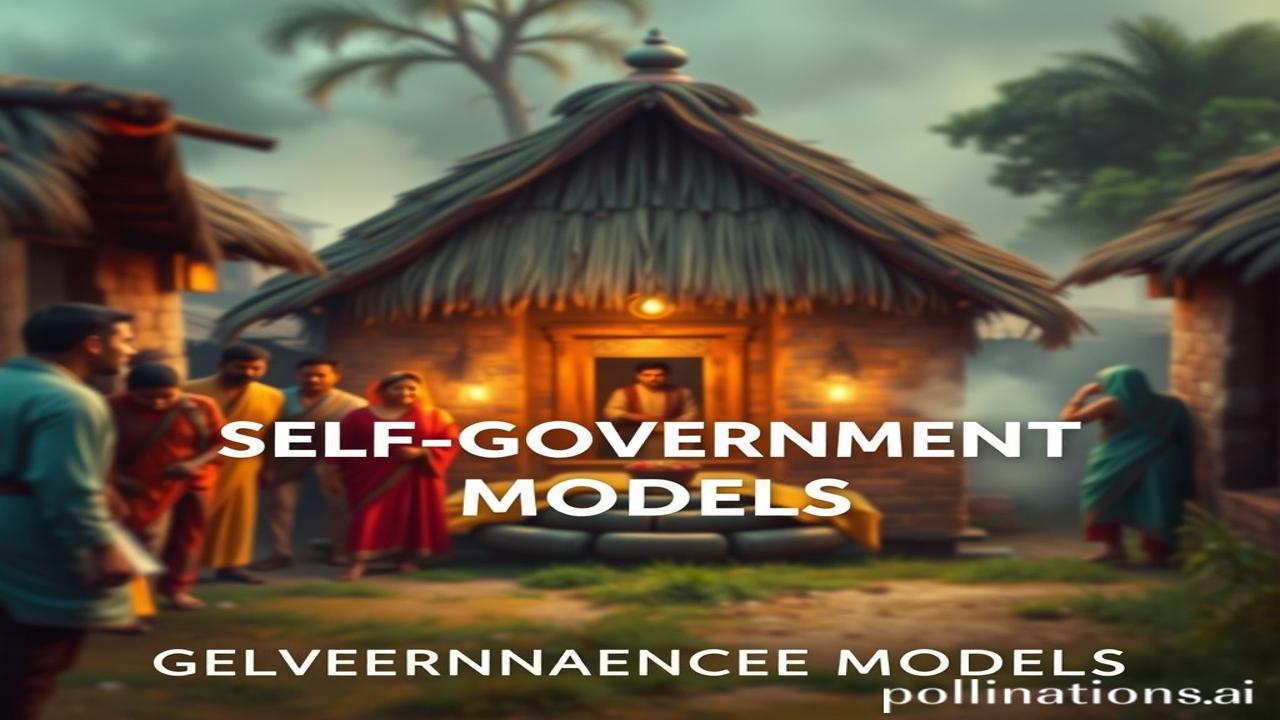Panchayat Raj: Ek Khoi Hui Virasat Ya Bhavishya Ki Rah? (Village Self-Rule Models: A Lost Legacy or the Path to the Future?)
Kabhi socha hai, ek aisey gaon ki, jahan har faisla sab mil kar lete the? Jahaa neta nahi, samaj hi sab kuch tha? Waqt ki dhool mein aisi hi kuch kahaniyan chhupi hain – Panchayat Raj ki. These aren’t just stories; they’re glimpses into India’s soul, into a time when villages were truly self-governing.
Panchayat Raj: Ek Nazar Itihas Pe (A Glance at History)
Panchayat Raj, simply put, is a system of local self-governance at the village level. Think of it as a mini-government by the people, for the people. This concept isn’t new; its roots run deep into ancient India. We find mentions of village assemblies (“sabhas” or “panchayats”) in the Rigveda and other ancient texts. These were often community-based bodies responsible for resolving disputes, managing resources, and maintaining social order.
But when exactly did this become formalized? While the idea is ancient, the modern incarnation of Panchayat Raj, as enshrined in our Constitution, came about much later. The 73rd Amendment Act of 1992 was a turning point, granting constitutional status to Panchayats and making them integral to India’s democratic framework.
Why is this important? Because for centuries, especially before centralized governments, villages were the unit of administration. They were responsible for their own well-being, and understanding Panchayat Raj helps us understand how India functioned and thrived for millennia. It’s about decentralization of power, empowering the grassroots, and ensuring that development reaches the last person in the last village.
Gaon Ki Galiyon Mein: Logon Ka Jeevan (In the Village Lanes: The Life of the People)
Imagine a small village nestled amidst fields of gold. The air is thick with the aroma of woodsmoke and freshly baked rotis. Ma Rukmini is heading to the village well, carrying her ghada gracefully on her head. Old Dada ji sits under the banyan tree, dispensing wisdom and resolving petty disputes.
“Arre, Ramu! Tere bail ne phir Kishan ke kheton mein ghus kar fasal kharab kar di? Yeh toh galat baat hai!” Dada ji’s voice booms across the village square.
Ramu, a young farmer, hangs his head in shame. The Panchayat, composed of respected elders like Dada ji, discusses the matter. After listening to both sides, they decide that Ramu must compensate Kishan for the damage.
“Dekho, hum sab ek pariwaar hain. Humhe aapas mein mil-jul kar rehna chahiye,” Dada ji explains.
This scene, repeated in countless villages across India, represents the essence of Panchayat Raj. It’s about collective decision-making, social harmony, and resolving issues at the local level. These weren’t just rulers dictating from afar; they were members of the community, deeply invested in its well-being. Think of them as farmer-leaders, artisan-administrators, people who understood the land and the needs of their neighbors.
Aaj Ki Dastaan: Panchayat Raj Aur Bharatiyata (Today’s Story: Panchayat Raj and Indianness)
Today, Panchayat Raj exists in a more structured form, with elected representatives and government funding. However, the spirit remains the same. It continues to be a vital tool for rural development, empowering women and marginalized communities, and promoting participatory democracy.
Hum aaj bhi dekhte hain ki many villages are reviving traditional practices of water conservation, forest management, and dispute resolution through the Panchayat. The concept of gram swaraj, or village self-rule, as envisioned by Mahatma Gandhi, is still relevant and resonates with the idea of Bharatiyata – that inherent Indianness that values community, sustainability, and self-reliance. It’s about taking ownership of our development and charting our own course, rooted in our traditions and values.
Mazedar Sach: Ek Galat Fahmi (Fun Fact: A Misconception)
Log samajhte hain ki Panchayat Raj sirf gaon ke jhagre suljhane ke liye hai. Lekin asli sach yeh hai that it’s much more than that! It’s about planning and implementing development projects, managing natural resources, promoting education and healthcare, and fostering social justice. It’s a comprehensive system for building a better future for rural India.
Drishya Aur Bhavnayein: Gaon Ka Ahsas (Sights and Emotions: The Feeling of the Village)
Imagine walking into a village Panchayat meeting. The air smells of earth and ghee from the morning prayers. You hear the murmur of voices, the rustling of leaves, and the distant sound of temple bells. The walls of the Panchayat hall are adorned with simple art depicting scenes of village life – farmers plowing fields, women fetching water, children playing games. You feel a sense of belonging, of connection to something ancient and enduring. This is the power of the village, the power of Panchayat Raj.
Antim Vichar: Ek Umeed Ki Kiran (Final Thoughts: A Ray of Hope)
Panchayat Raj, when truly empowered and practiced in its spirit, offers a glimmer of hope for a more just, equitable, and sustainable future. It reminds us that true progress lies not just in technological advancement, but in empowering communities to shape their own destinies.
” ग्रामे ग्रामे नवो धर्मः” – Grāme grāme navo dharmaḥ (In every village, a new righteousness arises.) This ancient saying reminds us that every village has the potential to be a beacon of hope, a testament to the power of collective action and self-governance. And in that lies the true strength of India.
